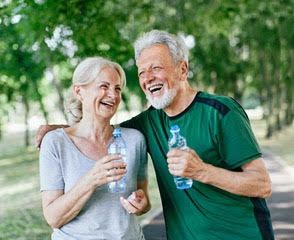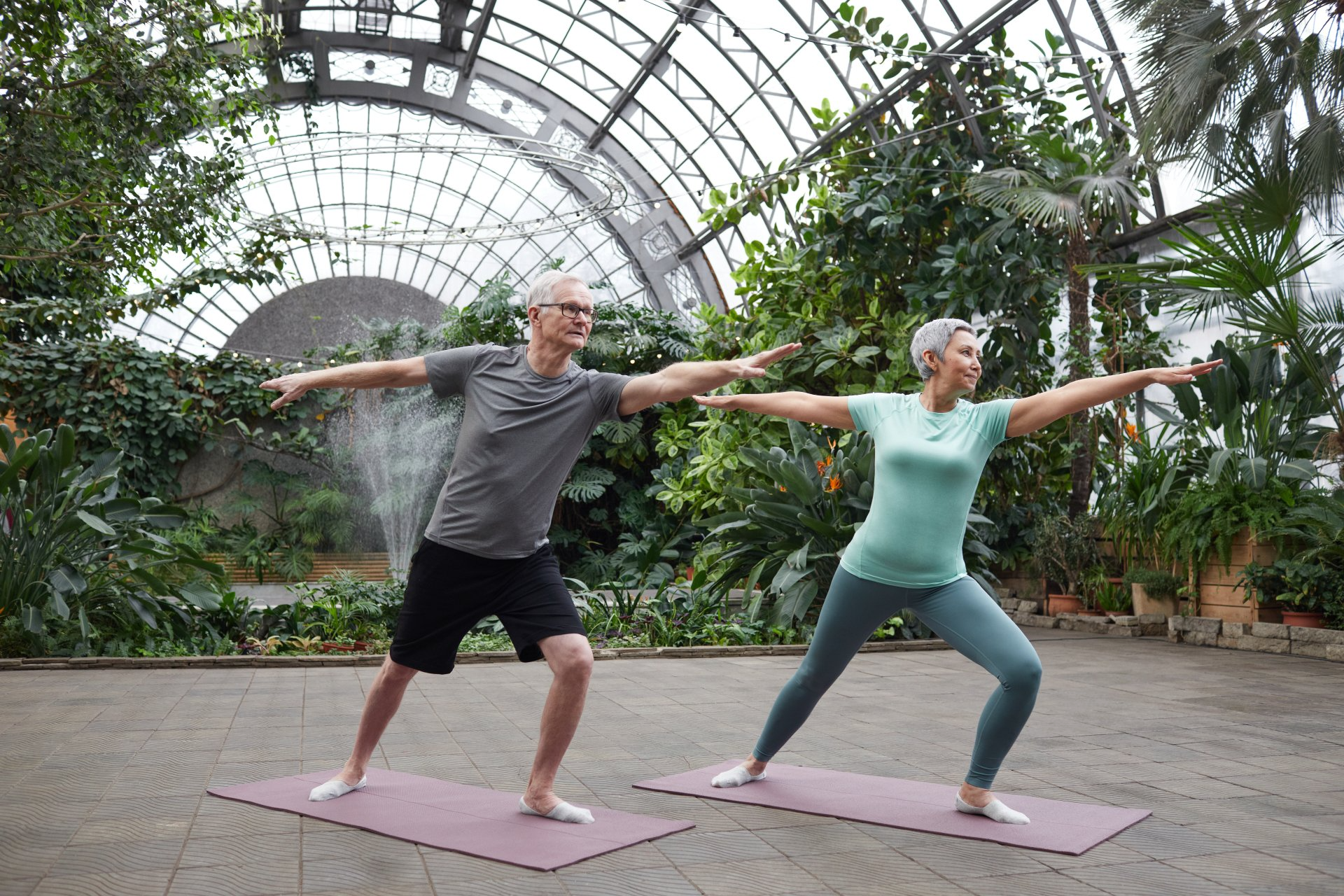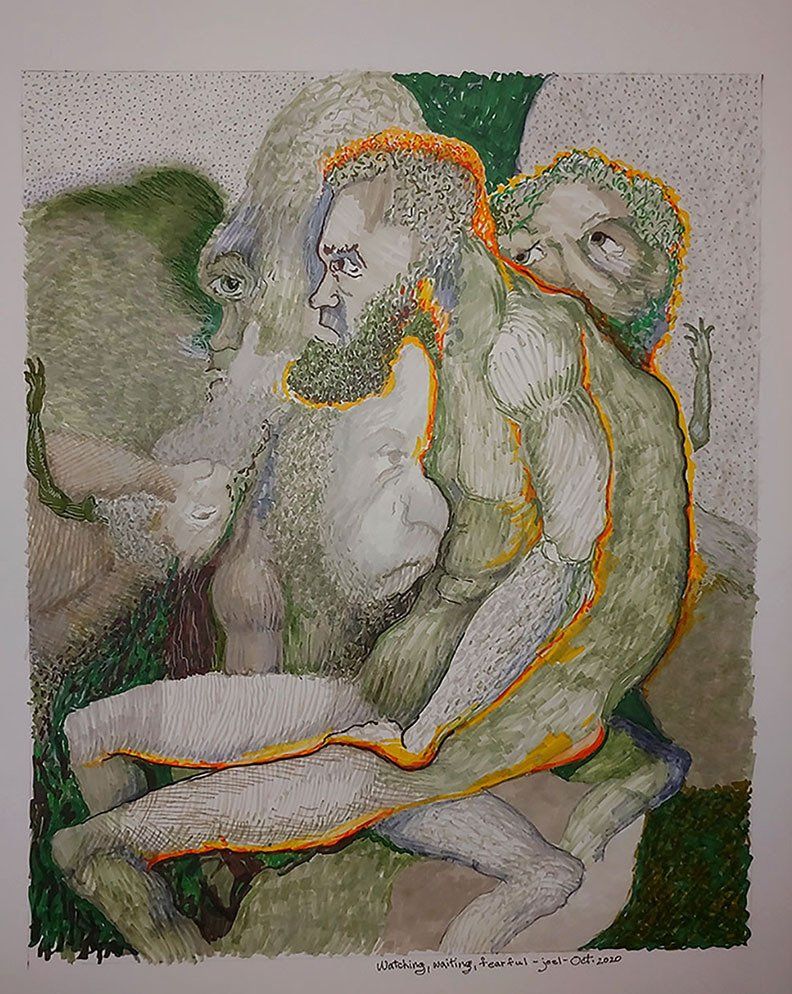Turning on our powerful internal pharmacy to promote natural healing.
We possess an incredible pharmacy within our body for development, growth, and natural healing. It is part of our subconscious being, with cells and organ systems dispensing powerful hormones, enzymes and regulatory factors for normal body functions, growth, and development. In response to illnesses and injuries, the internal pharmacy dispenses these factors to promote restoration and recovery.
While it is normally not under conscious control, can we mindfully activate our pharmacy to promote healing and health? Seeing the potency of placebo effects in Parkinson’s patients in clinical trials suggest this is possible.1 In the patients, conscious expectations were able to turn on their innate pharmacy leading to healing! This led me to search for other conscious behaviors that can also activate natural processes for restoring health. Behaviors that can decrease the risk for debilitating diseases and injuries encountered in aging. And when injured or ill, behaviors that along with good medical care can decrease the severity and promote recovery.
From reviewing the literature and observing others manage their health, optimism came to the top of the list of attitudes under conscious control that can promote wellbeing. Optimism being defined here as a general sense of positive outcomes for the future. It sounded almost too simple to be true. Two essential questions had to be addressed to check it out. First, how to generate optimism? Secondly, is optimism truly associated with better health?

Case studies were examined to see what insights they could provide. One on optimism that is well documented comes from a self-report by a patient with no formal training in medicine or science. In 1976, he published a scathing account of personally battling poor medical care in the prestigious
New England Journal of Medicine.
Normally the
Journal
is a medical
magazine publishing only studies conducted by the top physicians and scientists in the world. But Norman Cousins was neither a doctor or scientist and took the inner circles of the medical elite to task for poor performance. His skill for astute observations as a patient combined with being an extraordinarily gifted writer helped usher in much needed changes in medical care. He later expanded the journal article into a bestselling book
Anatomy of an Illness.
In the 1950’s and 60’s, Cousins was a celebrity well-known for his wit, writing and commitment to world peace. In the summer of 1964, he headed an American delegation to a meeting in Russia with the ostensible goal of resolving problems in cultural exchanges between the two countries. An underlying agenda was to promote the framework for a nuclear disarmament agreement with the Soviet Union. Cousins who always worked long hours burning the candle at both ends came home exhausted. Within a week of returning, an acute inflammation painfully engulfed his whole body. It was diagnosed as a degenerative collagen disease, producing symptoms characteristic of rheumatoid arthritis. Hospitalized, he was in constant pain, unable to move. One expert stated that his condition was likely fatal, with a 1 in 500 chance for survival.
Aware that he was facing a life-threatening disease, Cousin’s fought back by assessing his strengths. He reaffirmed his strong will to live, his optimism, his faith, and his trust in his personal doctor. His successful career as the editor of the popular weekly magazine
Saturday Review reconfirmed his ability to astutely analyze situations and make smart decisions. He recalled how he had successfully won his year-long battle as a 14-year-old teenager with a diagnosis of tuberculosis. With his confidence bolstered by self-affirmation, Cousins developed a gameplan for his recovery, beginning to tackle the problems one-by-one. First was the miserable treatment he was receiving in the hospital. He could not rest because of the constant disturbances to take blood samples and X-rays. Nutrition was bad with poor, overcooked food. He was experiencing gastric distress with bloody stools from the super high doses of medications he was being given.
Cousins decided to take charge of his own care by checking himself out of the hospital and into a hotel room where he would coordinate his treatment in partnership with his personal physician. Inspired by reading Dr. Hans Selye’s account of his pioneering studies on the deadly effects of overwhelming stress,3 Cousins self-diagnosed his condition as resulting from adrenal exhaustion creating “negative effects of negative emotions on body chemistry.” Essentially what we would now call Bad Stress, chronic high stress that suppresses the body’s immune system's ability to fight off inflammation and diseases.
As an antidote to negative emotions, Cousins reasoned that positive emotions should boost positive chemical changes in the body. So, ensconced in a luxury hotel room cared for by nurses, finding every movement painful, and knowing that failure could lead to his death, he worked diligently with his doctor on positive remedies for his illness. Poor hospital food was replaced with healthy nutrition. He was able to rest and sleep without disturbances. Researching the medical literature on the drugs prescribed for his treatment, he found many had toxic side effects. He was taking the maximum dose of phenylbutazone daily to reduce inflammation, but it can also cause skin rashes, ulcerations, nausea, pain, and intestinal bleeding. Side-effects he had! The toxicity of phenylbutazone is so acute that it is no longer approved for human use! Cousins was also prescribed 26 aspirin tablets a day, an extremely high dosage that can cause many of the same side-effects as phenylbutazone. The information Cousins found was readily available in the literature to the hospital doctors treating him.

In consultation with his personal physician, Cousins stopped taking both drugs. He also discontinued the pain medications, considering some pain as part of life and bearable as he focused on his recovery. He replaced the prescription drugs with getting high doses of Vitamin C by intravenous infusion (IV). Based on his reading and discussions with his doctor, Cousins thought the benefits of Vitamin C on blood oxygenation and promoting collagen repair would be therapeutic as his disease had been diagnosed as one of collagen degeneration. Nobel Laurate Linus Pauling’s strong advocation for Vitamin C treatments would not come out until six years later, so Cousin’s decision was ahead of his times. However, the numerous health benefits of Vitamin C are now firmly established.4 It is required for the development of blood vessels, cartilage, muscle, and collagen. It is also essential for healing processes in the body. A healthy diet alone provides sufficient Vitamin C for many of us. In some clinical situations including the treatment of inflammation and pain (symptoms in Cousins’ disease), vitamin C has been found to be clinically beneficial.5,6
Cousins had a legendary sense of humor and one of the positive emotions he wanted to nourish was laughter. He did this by arranging with friends in the entertainment business to bring a movie projector into his hotel room and show comedies by the Marx brothers and “Candid Camera” episodes. Nurses read him humorous articles written by columnists. After a good bout of laughter, Cousins found he could sleep without pain for several hours.
Diligence won the battle over illness for Cousins. He slowly recovered and was able to resume his normal lifestyle. In retrospect, Cousins credited his recovery to a strong placebo effect, his Positive Attitude coming from great expectations for recovery. Many of the biological mechanisms at work that benefited Cousins were promoted by healthy lifestyles. Namely, lowering Bad Stress through good self-care including a healthy diet, restorative rest, and staying socially active with strong supportive relationships with others. The distinguished medical scientist René Dubois writing in the Introduction to Cousin’s book emphasized that his self-treatment approach provided the rest and time needed for natural healing powers in his body to restore his health. The high levels of Vitamin C Cousins received via IV have been found to help alleviate post viral fatigue, which may have been one of his health issues.
Cousins devoted much of the rest of his life to studying and writing about the relationship between attitude and health. He was recruited to serve as a Professor on the Medical School faculty at the University of California, Los Angeles in 1978. His books on health and healing include
Laughter is the Best Medicine and
Head First: The Biology of Hope and the Healing Power of the Human Spirit. In many ways, the titles describe his foray into medical research as a patient.
How did Cousins’ writings and activism influence medical care in the Western World? First and foremost, he legitimized and popularized wholistic healthcare. He strongly encouraged physicians and all other healthcare workers to focus on respecting and treating the whole person, not just the symptoms of an illness or injury. Good physicians have known this from time immemorial, but in the 60’s and 70’s the common sense of this necessity was often getting lost in the proliferation of new “miracle” drugs and increasingly expensive, sophisticated procedures and instrumentation. Medicine was moving from being practiced as a humane blend of art and science to industrial processing focused on increasing time efficiency and profit. The result was a gap developing between the public and trust in doctors that Cousins worked to bridge. In the numerous talks he presented at large medical meetings and to Wellness programs, he continuously emphasized the importance of a positive, knowledgeable partnership between doctor and patient with the physicians treating their patients as human beings. Both were best served by working together, doing their best to manage illness and injuries.
______________________________________________________________________
The Author: Don Gash is an emeritus professor of Neuroscience (PhD) in the College of Medicine and Lewis Honors College at the University of Kentucky. His expertise is in drug development for diseases of aging, especially those effecting the brain. Over fifteen years ago, he recognized that aging posed serious threats to health and wellbeing – and had many features of being a disease. Dr. Gash felt that his experience in developing therapies for neurological diseases could be used to better understand normal aging processes and ways to promote successful aging. Ways that activate natural healing processes in the brain and body to effectively restore true wellbeing. Lifestyles and practices that do not replace good medical care when needed but make it work better. The advice given is evidence-based on published studies including his and from his years of personally testing many programs and exercises to identify those which effectively cultivate and enable Aging Successfully.
Sources:
PubMed identification numbers (PMID) are given for peer-reviewed scientific reports in mainstream science journals. The scientific papers are available online through PubMed on
www.nlm.nih.gov.
- Aging Well Post 1: A Guide to Successful Aging. Achieving our full potential for wellbeing with purpose and meaning.
- Cousins, N. (1979) Anatomy of and Illness (as perceived by the patient). W.W. Norton & Co., New York
- Selye, H. (1956) The Stress of Life. McGraw-Hill, New York
- Vitamin C: NIH Fact Sheet for Health Professionals. Available online
- Carr A. and McCall C. (2017) The role of vitamin C in the treatment of pain: new insights. J Trans Med. 15:77. PMID: 28410599
- Mitchel A. et al. (2020) Vitamin C and Thiamine for sepsis and septic shock. Am J Med. 133: 635-638. PMID: 31469984
All Rights Reserved | Aging Successfully







